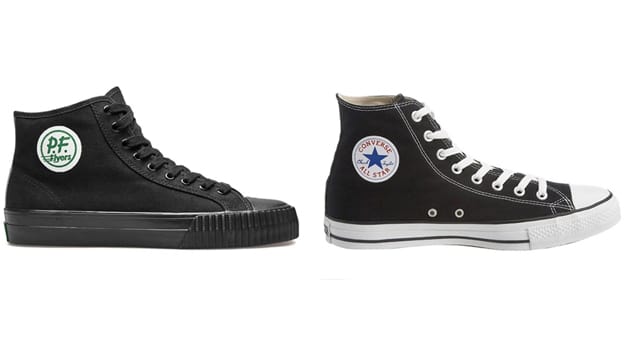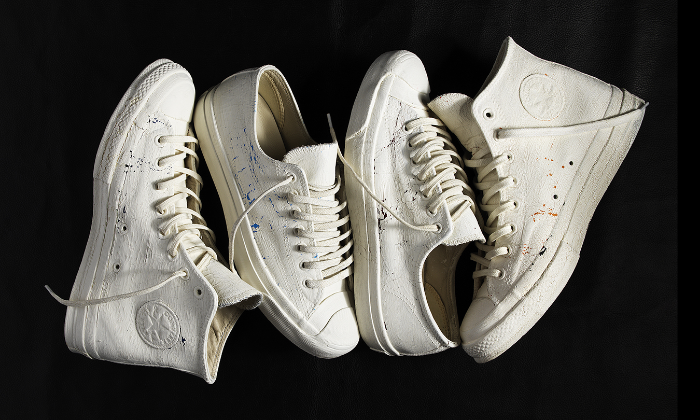Almost exactly 4 years after Converse filed 22 separate trademark infringement and dilution, and unfair competition lawsuits against Skechers, Walmart, Tory Burch, H&M, and Ralph Lauren, among other brands for allegedly infringing the trade dress-protected design of its signature Chuck Taylor shoe, and initiated a separate proceeding, what many have called “one of the most hotly-litigated trademark cases ever decided by the International Trade Commission” (“ITC”), the Federal Circuit has sounded off and sided with the Nike-owned sneaker company.
While most of the individual lawsuits have since settled, the case that Converse filed with the ITC has powered on, and in a decision dated October 30, the Federal Circuit tossed out an earlier decision from the ITC. In February 2016, the ITC – the U.S. government entity with the authority to prevent any shoe it believes to be infringing from entering into the U.S. – held that despite a federal trademark registration, Converse lacks trade dress rights in its Chuck Taylor sneaker design, namely, “the two stripes on the midsole of the shoe, the design of the toe cap, the design of the multi-layered toe bumper featuring diamonds and line patterns, and the relative position of these elements to each other.”
(The ITC did, however, find that two of Converse’s trade dress registrations, those extending to the designs of the soles of its Chuck Taylor sneakers, namely those centering on the diamond-patterned outsole, are valid and enforceable).
In particular, the ITC determined that Converse’s shoe lacked the necessary secondary meaning required to enjoy trade dress protection for the otherwise functional elements.
In accordance with trademark law in the U.S., only distinctive non-functional elements of trade dress are protectable. The Supreme Court further held in the Wal-Mart Stores, Inc. v. Samara Bros. case that a product design, such as the design of a shoe, is never inherently distinctive, and that the requisite distinctiveness must be proven by way of “a showing of secondary meaning,” (i.e., that consumers associate the appearance of the product with a particular company in much the same way as they do with a traditional trademark, such as a brand name or logo).
As for secondary meaning, that can be shown with evidence of advertising expenditures, consumer studies linking the mark to a source, unsolicited media coverage of the product, sales success, attempts to plagiarize the mark, and length and exclusivity of the mark’s use.
 One of the defendants’’ sneakers (left) & Converse’s Chuck Taylor (right)
One of the defendants’’ sneakers (left) & Converse’s Chuck Taylor (right)
Because Converse’s Chuck Taylor design did not, according to the ITC, enjoy federal (or common law) trade dress protection, the lookalike sneakers that Converse was suing over were not deemed to be infringing (after all, there were no rights of Converse’s to infringe).
However, the ITC noted that the accused footwear would be infringing if the mark had been found valid.
Fast forward to this week and the case got another day in court thanks to an appeal by Converse to the Federal Circuit in Washington, D.C. As first reported by PATENTLYO, the Federal Circuit’s 3-judge panel overturned the ITC’s findings, holding that “the ITC erred in applying the wrong standard in aspects of both its invalidity and infringement determinations.”
The test that should be used for gauging whether Converse’s sneakers have acquired secondary meaning is, according to the Federal Circuit, “(1) association of the trade dress with a particular source by actual purchasers (typically measured by customer surveys); (2) length, degree, and exclusivity of use; (3) amount and manner of advertising; (4) amount of sales and number of customers; (5) intentional copying; and (6) unsolicited media coverage of the product embodying the mark.” The court further notes, “All six factors are to be weighed together in determining the existence of secondary meaning.”
Five years of exclusive and continuous use will create a presumption of secondary meaning, the court stated, so “the ITC should rely principally on uses within the last five years.”
Because the Federal Circuit also found flaws in the ITC’s approach to trade dress infringement, it clarified, stating that in order to be infringing, the secondary designs must be “substantially similar” to the protected trade dress in the eyes of “an ordinary observer.”
Having set out the proper tests, the Federal Circuit sent the case back to the ITC to decide the case again using those particular tests.
* The case is Converse v. ITC and Sketchers, New Balance, et al. (Fed. Cir. 2018).











